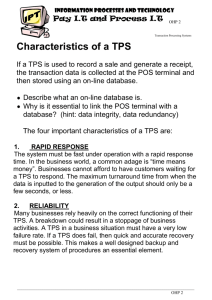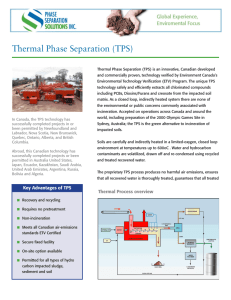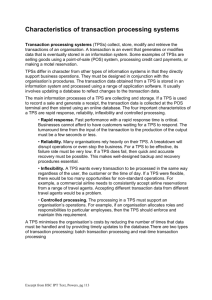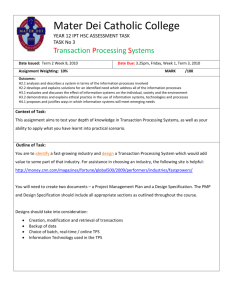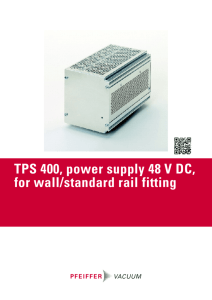FULLWOOD Thermal Protection System
advertisement
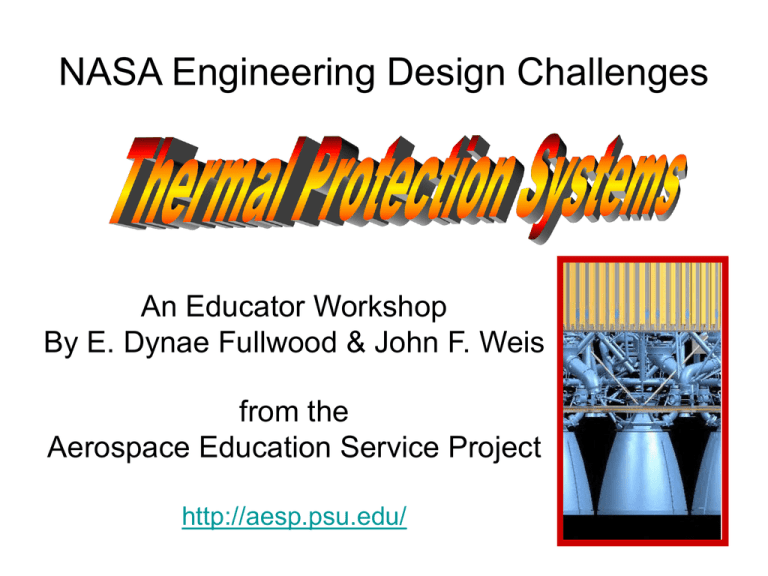
NASA Engineering Design Challenges An Educator Workshop By E. Dynae Fullwood & John F. Weis from the Aerospace Education Service Project http://aesp.psu.edu/ Thermal Protection Systems Educator Guide Offers Connections To: Background Information The ARES Launch Vehicles (show clip) Background Information Heat and Heat Transfer A form of energy that flows from a hotter place (heat source) to a cooler place (heat sink). Background Information Heat and Heat Transfer CONDUCTION: When heat flows through a solid substance. CONVECTION: When heat flows through a liquid or gas. RADIATION: When heat flows through empty space or a transparent medium. Background Information Thermal Protection Systems Sources of Heat on Spacecraft • Atmospheric Friction • Engine Exhaust • Hot Particles Background Information Thermal Protection Systems Types of TPS Satellites are protected with thermal blankets. Early Spacecraft used Ablative Heat Shields Background Information Thermal Protection Systems Types of TPS The Shuttle uses RCC, Tiles, Foam and Felt Blankets. Background Information Thermal Protection Systems Types of TPS Insulating foam will be used on the ARES launch vehicles The crew capsule will also use an Ablative Heat Shield Before TPS After TPS The Design Process The Design Challenge The Challenge: Build a TPS, using the specified materials, that protect the model for the longest possible time. Design Constraints: • Use only the specified materials to construct the TPS. • No glue may be used in the TPS itself. • No part of the TPS may touch the dowel. • No part of the TPS may touch the glue.
